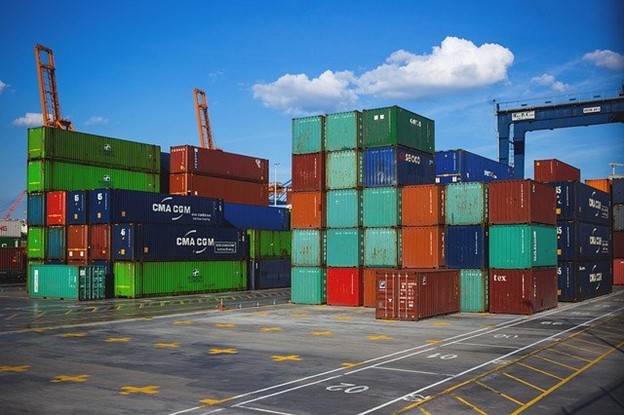
There’s no shortage of companies that have been hit hard by the worldwide semiconductor shortage. However, according to George Seryogin, Canadian auto production has taken the biggest blow.
Below, we’ll cover exactly what’s happening within this industry, why there’s a shortage, and how Canada’s autoworkers have been trying to recover.
What’s Causing the Shortage?
The semiconductor chip shortage started building before 2020 due to various supply-chain disruptions. But the Covid-19 pandemic exasperated the present issues to a new degree.
From a spike of demand to shipping container issues, here are the issues that spurred the shortage:
Supply Chain Disrupted
The auto industry saw a drastic plummet in vehicle sales during spring 2020, causing production facilities to cut standard orders for all materials. Unfortunately, this included semiconductor chips.
As people stayed inside and company’s switched to work-from-home business models, two industries saw a spike in chip demand: the IT sector and consumer electronics. When the global market approached the third quarter and people started to venture outside again, vehicle sales rose. However, chip manufacturers who usually worked with automotive production companies had given the bulk of their business to the consumer electronics and IT industries. Now the automotive industry is lacking a reliable source for necessary chips.
Geopolitical Reasons
A few global political moves factored into the shortage. One major contributor included sales regulations imposed by the Trump administration. A few large Chinese suppliers of semiconductors, including ZTE and Huawei Technologies, faced tight sales conditions when trading with the U.S. This led to the companies stockpiling their chips.
Additionally, American firms were barred from any chips produced by China’s Manufacturing International Corporation. The American federal government had placed the Chinese firm on a blacklist.
Shipping Problems
The global transportation system is another aspect causing the chip shortage. Ocean freights were not leaving their ports, while shipping containers grew scarce.
A lack of shipping containers led to companies paying premiums and opting for airfreight. However, airfreight is facing its own set of demands. As Covid-19 vaccines ship around the globe via airfreight, the industry’s capacity to accommodate other sectors has been drastically reduced. In 2021’s first quarter, international air cargo capacity dropped 25% from the previous year. And as passenger travel stays relatively low, there are fewer options for passenger planes to offer freight services.

What’s Happening Now?
As of now, each semiconductor end market is up — simultaneously. This means that demand continues to soar across all industries while supply remains low.
Marvell CEO Matt Murphy expressed his concerns during a CNBC Technology Executive Council. He’s predicting that if things continue as they are now, the shortage and its negative impacts will remain present in 2022.
Certain semiconductor chip production companies announced plans for factory expansion. Some, like Intel, have already broken ground in these expansions. But, despite quick efforts, enhancing facilities will still take time, and completion isn’t expected until 2023 at the earliest.
By far, the industry suffering the most is the automotive sector, but others have faced their own challenges. The most heavily impacted industries include:
- Automotive
- Appliances
- Consumer electronics
- Medical
- LED lighting
Chip Shortage Wreaks Havoc on Auto Industry
The supply chain issues, and the long lead-time of semiconductor chip production, continue to drag on. Although we’ve seen several sectors face blowback, none have been as impacted as the automotive industry.
Semiconductor chips are used in crucial elements of most vehicles today, including:
- Power steering
- Emergency brake systems
- Navigation control
- Infotainment systems
- Back-up cameras
- Collision detection systems
Auto assembly lines around the globe have dealt with a constant start and stop of production over the last year and a half. Production in certain countries has started to see signs of improvement. The U.S. had production climb 13.9 percent, while Mexico’s went up 11.3 percent.
On the other hand, Canada’s production was down 6.6 percent during the same period. As of now, the country expects an output of 1.2 million vehicles by the end of 2021. This is well below their 2.2 million pre-pandemic average.
Continuous Competition Exhausts Auto Industry
Over the last several years, carmakers have prioritized the output of electric vehicles. This environmentally-conscious focus now makes care more like electronic devices than gas-powered vehicles.
Unfortunately, it also means the automotive sect must continue to compete with other electronics industries for materials and supplies.
Can Auto Production Recover?
The last year and a half have proved challenging for industries utilizing semiconductor chips. But the ill-prepared auto industry suffered the most following the decision to cut orders on the necessary technology.
The industry is undoubtedly making strong recovery efforts, but not everything is in their favor. The shipping industry still faces Covid-19-related consequences, and mending geopolitical relationships is still in its early stages.
As the sector tries to catch up to previous production levels — while simultaneously competing with other electronic industries — it’s difficult to nail down a recovery timeline. However, we hope that auto production will show signs of recovery within the next few months.
